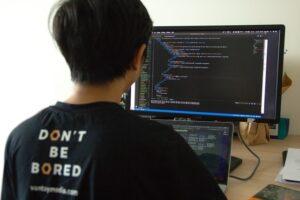Author's posts
Jan 25
Relational scavenger hunt – online version from restorativeteachingtools.com
“OBJECTIVE: Participants will build relationships, get to know each other, and laugh together over Zoom!”
Jan 16
A daily class ritual of dedicating the day’s learning builds community and trust and helps teachers get to know their students
“For those of us teaching remotely, the daily dedication can still help infuse the online space with genuine humanity. You can even make a collage out of the students’ dedicatees to use as digital wallpaper for virtual class meetings or your course homepage.”
Jan 16
A Turning Point for Combating Chronic Absenteeism in American Schools by Gabby Smith
“The shift from simply keeping track of attendance to actively reaching out to struggling students and families may seem subtle, but it could have life-altering positive consequences. “
Jan 14
Student engagement and attendance is impacted by online teaching: it needs to improve even after the pandemic
“The Clayton Christensen Institute report also recommends that schools establish virtual programs with autonomous staff and leadership that tap into the resources and expertise of their conventional school partners to “give students benefits that neither conventional schools nor virtual schools alone can offer.”
Dec 31
“This or That” – a game with a restorative twist
Learners will experience a lively way to connect quickly and learn about others
on a virtual platform, beginning by responding to more silly and low-risk
prompts, and moving towards prompts that elicit more personal sharing and
deeper reflection.
Dec 21
Students attend virtual classes without engaging in the learning: 6 exercises to get to know your students better and get them engaged
“Whether it’s that they love to play baseball, have three brothers, or enjoy writing or photography, celebrating your students’ unique experiences and identities can bolster connections that keep them engaged and performing better in school. Students who have a deeper sense of self—and purpose—are also better able to define their goals and stay focused on pursuing them, concluded a 2014 study from David Yeager, Angela Duckworth, and colleagues.”
Dec 21
Are Students Present and Accounted For? An Examination of State Attendance Policies During the Covid-19 Pandemic: a US study from Attendance Works
“This report discusses how the coronavirus pandemic impacted attendance data. It presents a summary of state attendance guidance developed since spring 2020, and examines the extent to which recent state guidance guarantees the availability of consistent, reliable data taken on a daily basis.”
Dec 16
Engaging students in a virtual environment: consider virtual literature circles to create a safe space for students
“We must also choose books to help our students through what may be the most difficult moments of their childhoods, but also to understand the fight that others face, and what their role is and can be. Let’s help them get there. Let’s keep rich literature alive in a big way during and after this pandemic.”
Dec 14
So your students are showing up virtually but not engaging. Here are some helpful strategies to encourage turning cameras on
“f you want to incorporate social and emotional learning (SEL) strategies to prompt camera use among your students, start with the recognition that words matter: Our communication with our students needs to be rooted in community, not compliance.”











